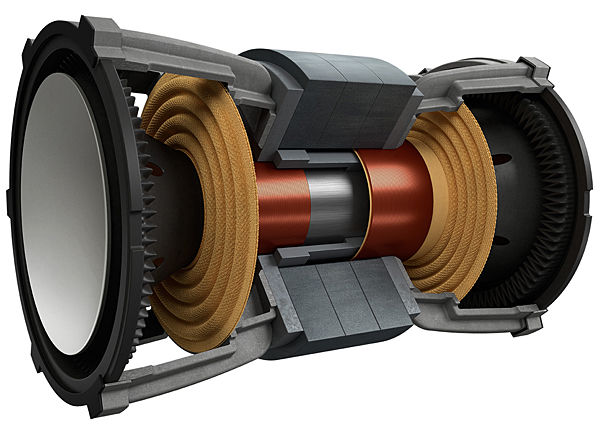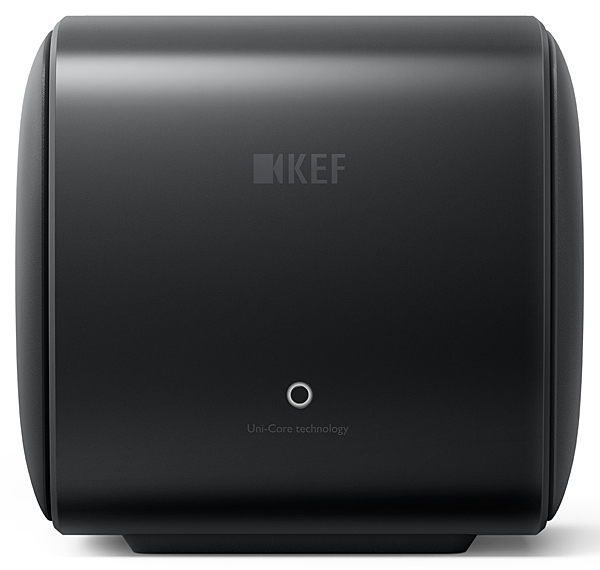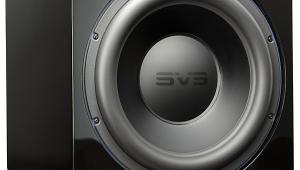The only part I miss slightly from not having a 5.1 system anymore is the sub for some movies. The compact size of this makes it tempting, the cost makes it not.
KEF KC62 Subwoofer Review

AT A GLANCE
Plus
Incredible extension from incredibly small design
Highly flexible controls and features
Wireless option
Elegant finish
Minus
Limited peak output
Pricey
THE VERDICT
KEF’s KC62 delivers impressively deep bass in an elegant, ultra-compact package, though its output is best suited for smaller rooms or listening at more moderate levels.
Mankind has sought to get more and deeper bass from smaller and smaller designs ever since the first Neolithic audiophile blew through a conch shell and thought, "Damn, I wish this went lower, louder!"
Good luck with that. Hoffman's Iron Law (that's Josef Hoffman, the "H" in pioneering American hi-fi firm KLH) tells us, essentially, that amongst the three desirables of deep bass, lifelike loudness, and compact size, you can have any two but never all three from a single design.
It's not really Joe's law, of course, but the universe's. High acoustical levels of truly low frequencies need a large vibrating surface moving a good distance in and out: it's a function of wavelength, which increases rapidly as frequency decreases. And a big woofer needs a large box to baffle it properly and supply an adequate volume of air to achieve sufficiently low resonance—and, of course, to fit that big driver.
Beating these restrictions requires considerable electro-acoustic guile, which is precisely what KEF—one of Britain's oldest loudspeaker makers—has brought to bear on a new design it terms Uni-Core. Briefly, this is a clever, "force-cancelling" (back-to-back) double-woofer that backs two drivers onto a common magnet structure. One smaller-diameter voice coil moves concentrically inside the other, sharing a common pole-piece, with an intervening aluminum spacer/structure to hold the whole apparatus in alignment. This topology requires a balletic balancing of magnetic and electrical parameters like flux, resistance, reluctance, and inductance, such that two loudspeaker "motors" with necessarily very different voice-coil dimensions and air gaps maintain perfect electromagnetic balance over their full travels. While Uni-Core incorporates a deal of mechanical cleverness too, it is this high-wire act, no doubt achieved with considerable computer-simulation firepower, where the real Uni-Core magic happens.

Little bigger than a basketball, KEF's KC62 begins, like all "mini" subwoofers, by trading woofer diameter for excursion: that is, in-and-out-ability. (The firm claims an innovative pleated surround increases Uni-Core's linear throw.) Doing so sacrifices efficiency (in the physics sense) dramatically, which designers answer by applying more power: in the KEF's case, 500 class-D watts for each driver—err, voice coil. Smart DSP equalization and low-frequency dynamic management do the rest, with the aid of another Uni-Core innovation: a current-sensing feedback loop from the actual voice-coils that feeds information about incipient distortion to the digital processing "brain." Lastly, KEF's one-piece extruded aluminum enclosure's thinner walls resist cabinet resonance and yield greater internal volume relative to external size.
Setup
The KC62 might inspire the adjective "cute" if it wasn't so incredibly dense— three times as heavy as the bowling ball it so readily calls to mind. Like every KEF product I've encountered over the years, it is gorgeously finished, with gratifying attention to detail of surfaces, textures, and tones. Two sides culminate in the opposing driver cones, while the bottom surface has a footing of some vibration-absorbing, woofer-walk-resisting stuff. A surprisingly elaborate control and input/output panel on the back has the usual (but unusually nicely detented) rotary volume and crossover knobs, 0/180 degrees phase and LFE/Normal toggles, plus a five-position EQ switch with Wall, Corner, and Room settings. Two additional settings, Cabinet and Apartment, are meant to limit deep-bass output and thus vibrational transmission. Next is a four-place "DIP" switch set that can impose a high-pass filter on the KC62's pass-through stereo line outputs, for a system lacking crossover facility in its amp or receiver. Finally, there's an expansion port to accept KEF's KW1 wireless adapter, an option that adds another $200 to the KC62's already upmarket $1,499 price.

Performance
The issues are relatively simple with a subwoofer. Does it go low enough? Does it go loud enough? Is it flat enough over its three-octave useful range to avoid booming or hooting? And is it acceptably low-distortion at its usable levels (remembering that we are much more tolerant of distortion at very low frequencies than at higher ones)? Most everything else, including my favorite oxymorons "fast bass" and "tuneful bass," is so much verbiage. (To whatever extent those are real, they say more about the low-frequency behavior of the room than of the woofer.)
Didactic digressions done, let's address the little KEF. Does it go low enough? Yes, indeed. I heard useful levels (caveats to come) of clean, un-doubled output down to 25Hz and even lower. Does it go loud enough? Yes. No. Maybe. (I'll expand below, of course). Is it flat enough? Absolutely—especially given its flexible EQ options.
I started out with the KC62 in my desktop system, mated with IK Multimedia's small but highly capable MTM powered monitors. These have their own flexible controls, including a high-pass option at 60Hz. With this selected, and the sub connected to my DAC's unbalanced left/right outputs and pushed under my desk well out of reach of my size 11s, I was rewarded with rich, fully extended sound requiring nothing more than nudging the KC62's volume and crossover controls to balance up to near perfection. Fourplay's smooth-jazz track "Café l'Amour" (16-bit/44.1kHz FLAC, Qobuz) has bassist Nathan East slapping a low E-flat-D vamp in spots, plumbing down near 35Hz. At my desktop levels—the MTMs can play clean and punchy to a solidly loud volume, but a bit shy of control-room-monitor level—the tiny KEF had no difficulty in "keeping up." Deep bass stayed solid, dynamic, and undistorted, and the next octave displayed zero boom, thud, or unseemly whooshing.
- Log in or register to post comments


Great engineering achievement but to what end? This thing is basically an 11" cube. Going just slightly larger (14-15" cubed) gets you a real quality 12" sub like the Rythmik L12 for only $600.
I fail to see the point of needing to get such a small sub and dealing with the significant cost and output compromises.

I've a Definitive Technology Super Cube 1, which goes to 16HZ in my 1st 5.1 HT. The wife required me to go on a quest for an acceptably invsible HT system for our new home & new primary HT system. The KC62 can do what the Super Cube 1 can do & do it more accurately! Try playing a recording of a space shuttle launch, as realistically as your hearing can stand and you won't be disappointed. This is an engineering accomplishment for size & output.

Small enough to stay out of the way in a workstation system ... hmmm. Might be a good addition to my Altec speakers, that give up around 45-50 hz.
As for other things mentioned:
Here's a story about a 18000 yr old conch shell found in a cave, played: https://arstechnica.com/science/2021/02/listen-to-haunting-notes-from-an...
And there are pipe organs that have extremely low bass. Probably the deepest is the Sydney Town Hall with a true 64' stop (one of only a few in the world). Somehow, I doubt that the mp3's on the web site capture the full range. Could the KEF produce usable output of the bottom octave (8-16 Hz)? https://www.ohta.org.au/confs/Sydney/SYDNEYTOWNHALL.html




























































